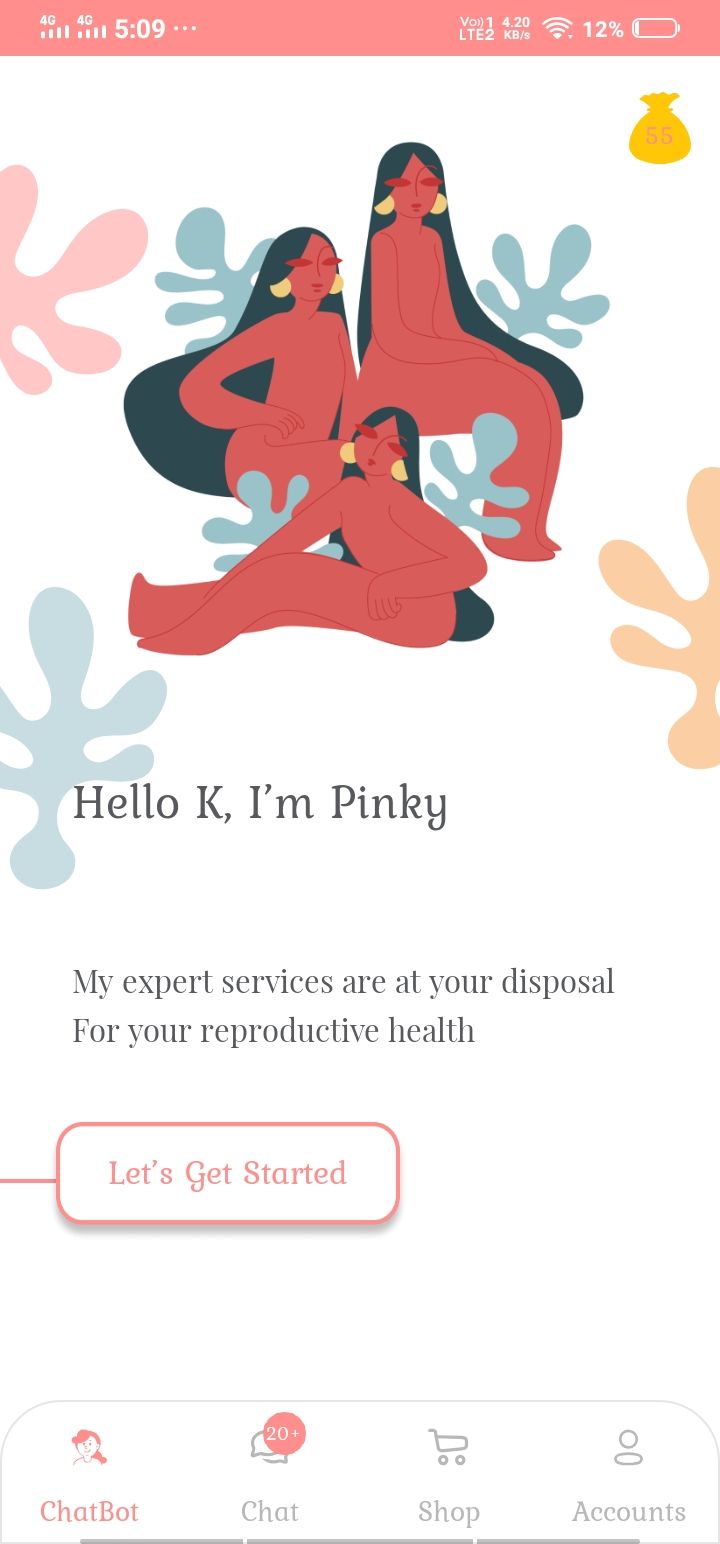A full-term pregnancy is divided into three trimesters, which can last around 40 weeks, beginning from the first day of the last menstrual period. The fetus meets specific developmental milestones during each trimester. Let’s dive in further to understand the stages of pregnancy.
Stages of pregnancy month by month :
There are three different stages of pregnancy, and each stage is called a trimester. Each trimester lasts around three months. Your doctor will most likely talk to you about fetal development in terms of weeks. So, if you are three months pregnant, it implies that you are about 12 weeks pregnant. During each trimester, you will notice distinct changes in the fetus and yourself.
The three trimesters are defined as follows, though the timing can vary:
- First trimester: 1–12 weeks
- Second trimester: 13–28 weeks
- Third trimester: 29–40 weeks
Some people also mention a fourth trimester, which is the three-month transition period post delivery. Traditionally, we consider pregnancy to be a nine-month process. However, this is not always the case. A normal pregnancy can last around 40 weeks or 280 days. Depending on the months you are pregnant (some are shorter than others) and the week you deliver, you could be pregnant for nine or ten months. It is perfectly normal and healthy.
When you come close to the end of your pregnancy, you may hear several different names for when you go into labour. These classifications categorise the final few weeks of pregnancy. They are also used to monitor newborns for certain complications.
- Early pregnancy – Babies born in the early term period or before may be at a higher risk of breathing, hearing, or learning problems than babies born a few weeks later in the full-term period.
- Late pregnancy – A pregnancy is late-term between 41 weeks and 41 weeks and six days. When a pregnancy extends 42 weeks or beyond, it is considered post-term. Late-term and post-term pregnancy can increase the chance of health problems, like – having more than average birth size, postmaturity syndrome and low amniotic fluid.1 2
Trimester breakdown:
The fetus undergoes a lot of changes throughout a typical pregnancy. Hence, there are various fetus stages of pregnancy where we can observe distinct variations in the fetus during stages of gestation. Your baby develops through several stages, starting as a blastocyst, then maturing into an embryo, and finally a fetus. Your baby’s future heart cells will start to flicker around the 5th week. They will have regular sleep and wake cycles at 27 weeks, and your baby will be physically developed at 39 week of pregnancy. Now, let us understand more maternity stages or trimesters in detail.
First trimester:
The first trimester starts from conception and lasts 12 weeks. This is usually the first three months of pregnancy or the early stages of pregnancy. During this trimester, the fertilised egg will develop from a small group of cells to a fetus having the baby’s features. You’ll have to take care of your diet and make small changes in your life. You can follow a pregnancy food chart and avoid few things like alcohol and smoking in your life.
Month 1 (Week 1 to week 4) –
- As the fertilised egg grows, the amniotic sac grows around the egg, and the placenta also develops.
- Over the first few weeks, a primitive face will form, with large dark circles for eyes.
- The mouth, lower jaw, and throat are all developing right now.
- Blood cells are forming, and circulation will begin shortly.
- By the end of the fourth week, the little “heart” tube starts beating at 65 beats per minute. The fetus is about 1/4 inch long by the end of the first month, which is tinier than a grain of rice.
Month 2 (Week 5 to week 8) –
- Face features continue to develop this month.
- Each ear begins as a little skin fold on the side of the head.
- Tiny buds are forming that will eventually grow into arms and legs. Fingers, toes, and eyes are all developing.
- The neural tube (brain, spinal cord, and other neural tissue of the central nervous system) is now fully formed.
- The digestive tract and sensory organs also start developing.
- Bone begins to replace cartilage.
At this point, the head is large in proportion when compared to the rest of the body. You can usually detect the heartbeat at around six weeks. Doctors use the term “fetus” rather than “embryo” after the eighth week. The fetus is around 1 inch long by the end of the second month.
Month 3 (Week 9 to Week 12) –
- At this stage, arms, hands, fingers, feet, and toes are fully developed.
- The fetus starts exploring by opening and closing its fists and mouth.
- Fingernails and toenails are growing, and external ears are formed.
- Teeth are growing under the gums.
- The reproductive organs also develop, but it is difficult to determine the sex of the baby in the ultrasound.
- The circulatory and urinary systems are all working; the liver produces bile.
The fetus is fully formed by the end of the third month. All the organs and limbs (extremities) are present and will develop further before becoming functional. The fetus is around 4 inches long at the end of the third month. As most critical development has occurred, the chance of miscarriage drops significantly after three months.
Second trimester:
The second trimester lasts from weeks 13 to 27. It is often the most comfortable period for the majority of pregnant women. Most of your early pregnancy symptoms will disappear, and you’ll most likely have more energy during the day and be able to have a better night’s sleep.
Month 4 (Week 13 to week 16) –
- The fetal heartbeat may now be audible using a device known as a doppler.
- You can see distinct fingers and toes.
- Eyelids, brows, eyelashes, nails, and hair are all formed.
- Teeth and bones become denser.
- The fetus can suck its thumb, yawn, stretch, and make faces.
- The nervous system will start to function.
- The reproductive organs and genitalia are now fully grown, and your doctor can tell whether the fetus will be male or female at birth using ultrasound.
- The fetus is around 6 inches long by the end of the fourth month.
Month 5 (Week 17 to week 20) –
- You may notice the fetus moving around.
- The fetus is developing muscles and strengthening them. The first movement is known as quickening and can feel like a flutter.
- Hair starts growing on the head. A soft fine hair called lanugo covers the shoulders, back, and temples. This hair protects the fetus and sheds by the end of your baby’s first week.
- The skin is covered with a whitish layer known as vernix caseosa. This “cheesy” substance protects fetal skin from amniotic fluid exposure. This layer sheds shortly before birth.
- The fetus is around 10 inches long by the end of the fifth month.
Month 6 (Week 21 to week 24) –
- You can look into the uterus now and see that the fetus’s skin is reddish and wrinkled, and veins are visible through translucent skin. You can see the finger and toe prints.
- Eyelids begin to part, and the eyes start to open.
- The fetus responds to sounds by movement or increasing its pulse rate.
- If the fetus hiccups, you may observe jerking motions.
- If your baby is born prematurely, it may survive after the 23rd week with intensive care.
- The fetus is around 12 inches long by the end of the sixth month.
Month 7 (Week 25 to week 28) –
- The fetus continues to grow and generate body fat reserves. Hearing is developed fully at this point.
- The fetus moves around regularly and responds to stimuli such as – sound, pain, and light. The amniotic fluid starts to diminish.
- If your baby is born prematurely, it will most likely survive until the seventh month.
- The fetus is around 14 inches long at the end of the seventh month.
Third trimester:
The third trimester is the last stage of pregnancy and lasts from the 28th week till your baby is born. You’ll start visiting your doctor more frequently throughout this stage of pregnancy.
You might be tempted to start counting down the days until your due date in the hope that it would arrive sooner, but each week of this final stage of development helps the fetus prepare for birth. Throughout the third trimester, the fetus rapidly gains weight, adding body fat that will be useful after birth.
Month 8 (Week 29 to week 32) –
- The fetus continues to develop and develops bodily fat reserves.
- You may notice more kicking.
- The brain is quickly developing and the fetus can see and hear.
- Most internal systems are well-developed, however; the lungs may still be immature.
- The fetus is approximately 18 inches long and weighs 2kgs.
Month 9 (Week 33 to week 36) –
- The fetus continues to grow and mature at this time.
- The lungs are almost fully developed.
- The fetus has coordinated reflexes that allow it to blink, close its eyes, turn its head, grasp firmly, and respond to sounds, light, and touch.
- The fetus is 17 to 19 inches long and weighs around 3kgs.
Month 10 (Week 37 to week 40) –
You could go into labour at any time during the final month. Because space is limited, you may notice less movement. The fetus’ position may have shifted at this point to prepare for birth. It should be head down in your uterus. You might feel very uncomfortable during this final stage as the fetus settles into your pelvis and prepares for birth. At this point, your baby is ready to meet the outside world. They are roughly 18 to 20 inches long and weigh about 3kgs. 3
Prenatal development:
It is a period of remarkable change that helps to establish a foundation for future psychological development. The brain grows throughout pregnancy. But, it keeps growing during the early years of childhood.
Prenatal development happens in three stages:
- Germinal stage of pregnancy – The first two weeks after conception
- Embryonic stage of pregnancy – The third through the eighth week after conception
- Fetal stage of pregnancy – The ninth week until the birth of the baby 4
Now, let’s find answers to the frequently asked questions about pregnancy.
How do you calculate pregnancy days?
The term “gestational age” is used to determine the time of pregnancy. The first day of your last menstrual period (LMP) is the start of your gestational age. Gestational age might be confusing. Most people believe that pregnancy lasts nine months. And yes, you are pregnant for roughly nine months. Yet, because pregnancy is measured from the first day of your last menstrual period — around 3-4 weeks before you become pregnant — a full-term pregnancy generally lasts about 40 weeks from LMP – nearly ten months. It’s normal for many women to forget when their last menstrual cycle started. An ultrasound is the most accurate tool to determine gestational age early in pregnancy. 5
How does pregnancy start?
For a pregnancy to occur, sperm must meet up with an egg. Pregnancy begins when a fertilised egg implants in the uterine lining. It takes about 2-3 weeks after having sex for a pregnancy to occur. 6
What happens in the 1 week of pregnancy?
There is no baby or embryo, at least not yet – just an egg and sperm ready for fertilisation. But, between weeks 1 and 2 of pregnancy — the week before and immediately after your last menstrual period — your body is hard at work preparing for the event that will pave the way for the baby, which is ovulation. Your uterus is preparing for the arrival of a fertilised egg; however, you won’t know for sure if that egg has successfully fertilised with sperm until next month.7
Should I feel pregnant at 3 weeks?
You may not even be aware of your pregnancy during the first three weeks, and you may not experience any early pregnancy symptoms at all. Ideally, a missed period is the first sign of pregnancy. You may start noticing some of the symptoms at this time or a bit later. A few small changes indicate pregnancy, and some women can sense or recognise them. 8
What pain is normal in early pregnancy?
You may feel mild cramps in the uterus during early pregnancy. You may also experience pain in your vagina, lower abdomen, pelvic region, or back. It may be similar to period cramps. These minor pains could be due to implantation, constipation or gas, or the womb expanding and stretching your ligaments to make room for your baby.
If the pain is mild and goes away on its own, there is probably nothing to be concerned about. However, consult a doctor if you feel any pain, spotting or heavy bleeding. If you have intense or chronic pain, faintness, nausea, a high fever or chills or dizziness, get immediate medical help. 9
What are the signs of a healthy pregnancy?
A healthy mother is more likely to have a healthy baby, and taking care of your body is an excellent way to give birth to a healthy baby. If you are pregnant, you must take care and eat according to your food chart to avoid any pregnancy complications. Signs of a healthy pregnancy are:
- You can see consistent growth patterns.
- Monitor your maternal weight gain.
- You can observe fetal movements and heartbeat in the second trimester.
- Observe the fetal position in the third trimester. 10
What is the golden period of pregnancy?
The second trimester of pregnancy is called the “golden period” because many of the unpleasant symptoms of the first trimester disappear. You will experience less nausea, better sleep patterns, and more energy throughout the second trimester. But you may have a new set of symptoms, including back pain, abdominal pain, leg cramps, constipation, and heartburn. 11





